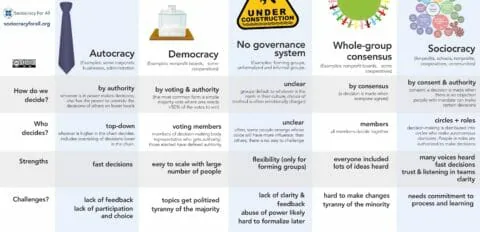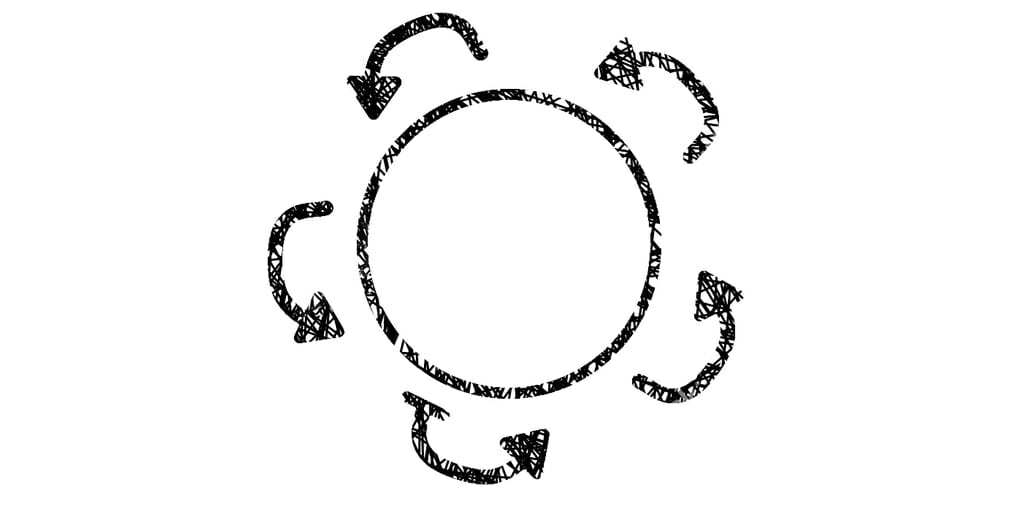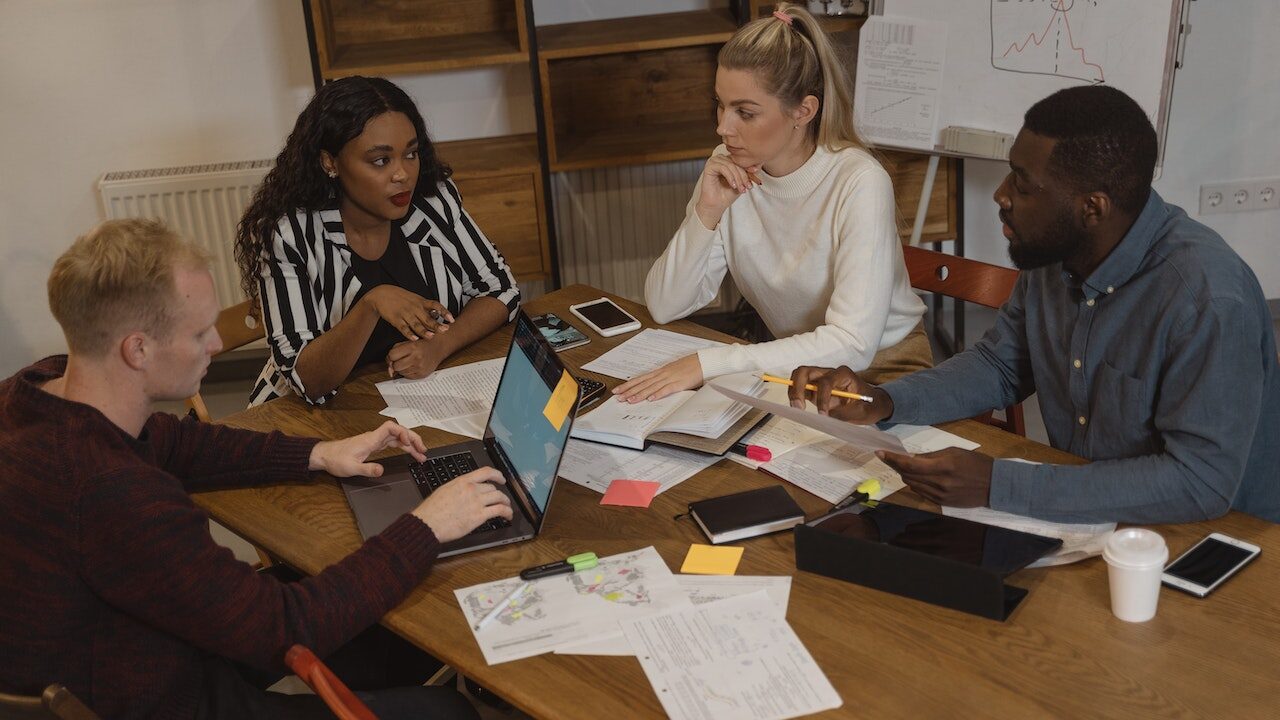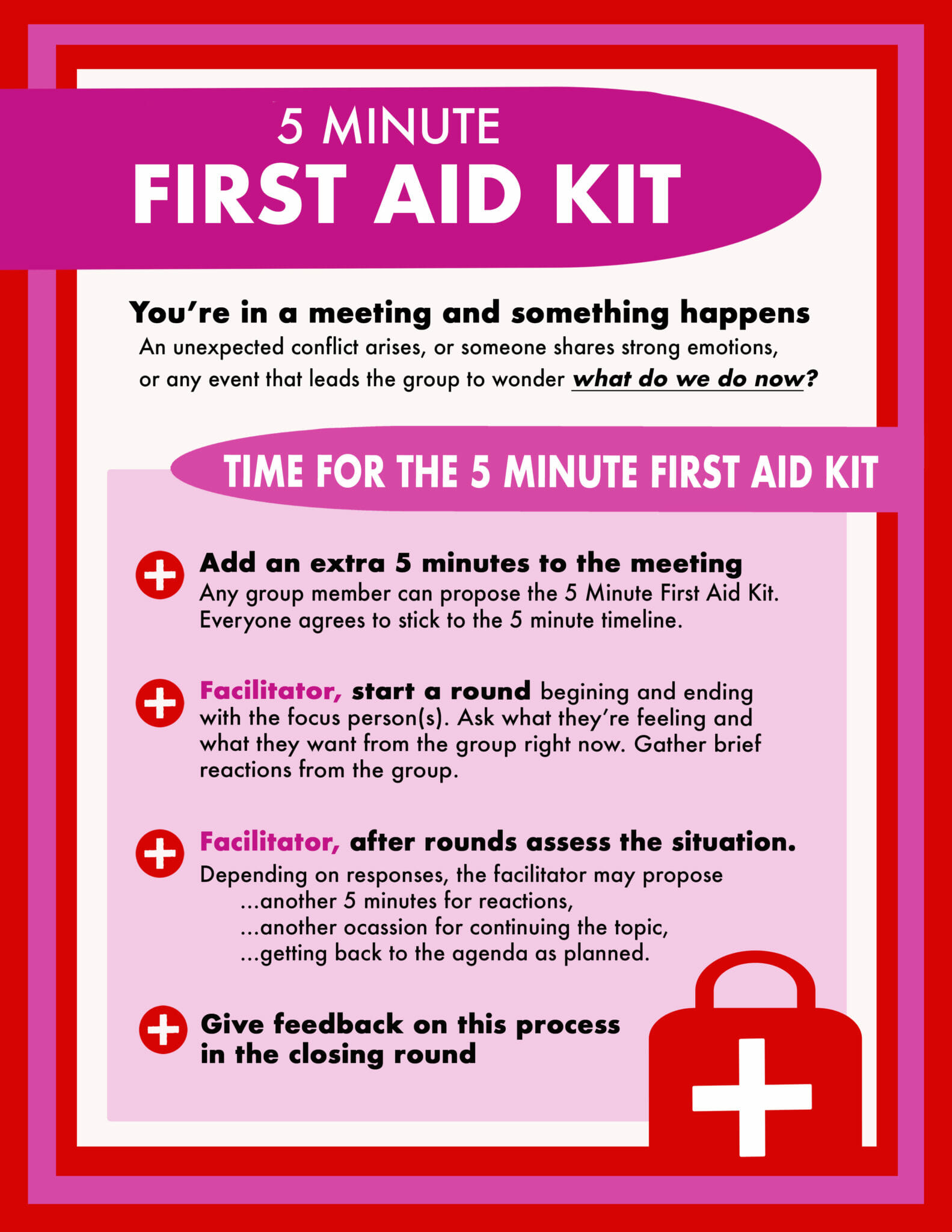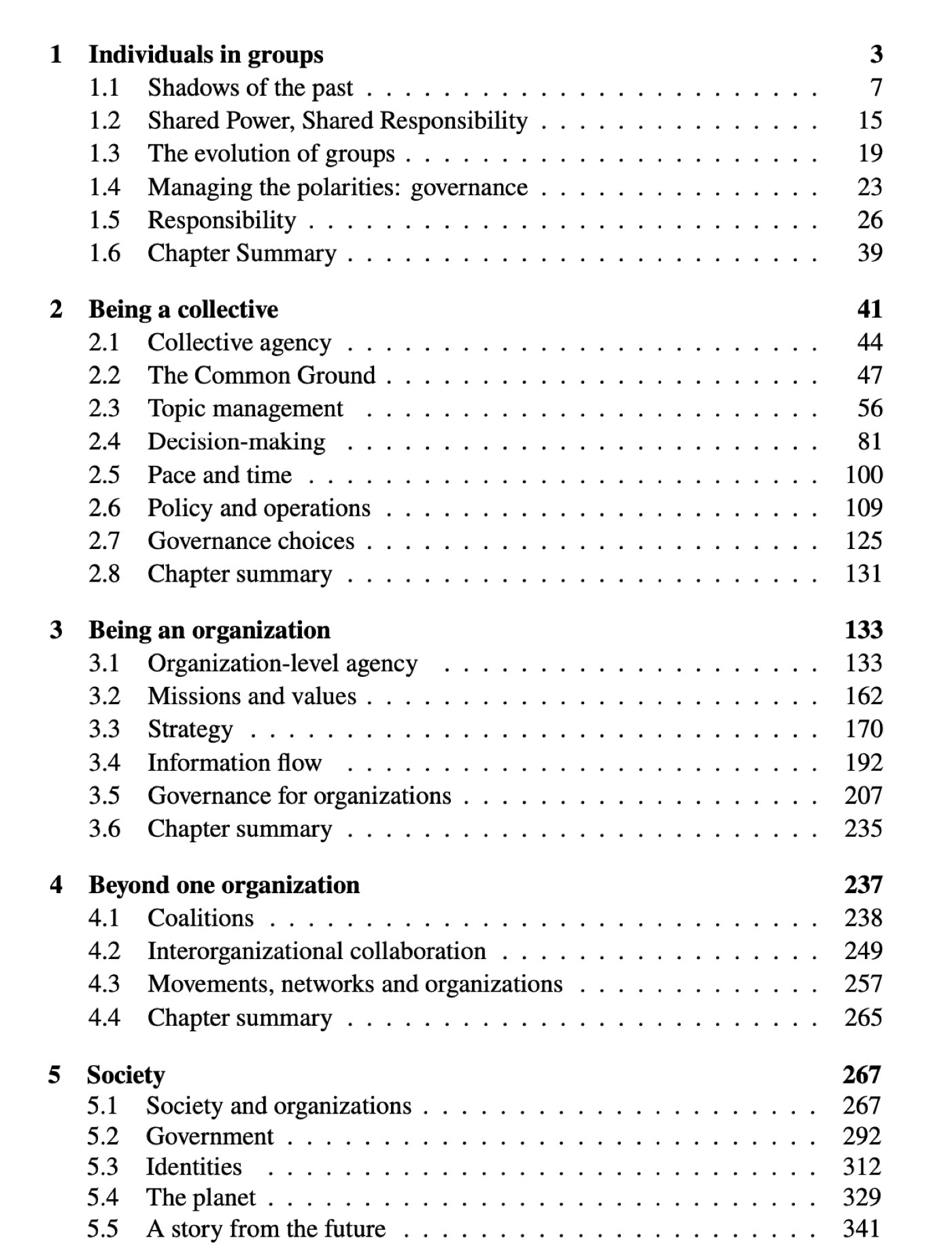Meeting facilitation for meaningful meetings
Sociocratic meetings are different.
They’re connecting.
Calm. Focused.
They often feel more meaningful, too.
Sociocratic meeting facilitation is a balance of structure and flow, structure and improvisation, and everything happens within the people’s consent.
This page gives you a glimpse of what meetings for your group could look like.

Meeting facilitation: format of a sociocratic meeting
A typical meeting in sociocratic meeting facilitation follows the format below. It’s like a checklist to make sure all is tended to – meant to support, not constrain.
Click on the part you’re curious about and watch the meeting recording of our specially recorded meeting!
There are three kinds of agenda items: reports, exploration and decision – there are examples below and an explanation of the difference.
The total time of the recording is about 40 minutes, representing the essence of a one-hour meeting. This group was super focused and prepared!
💙 A special thank you to Lizzie, Adam, Luciano, Michael, and Elandriel for volunteering to record this! 💙
attendance, duration, minutes, info, new meeting
report, exploration, or decision
interpersonal, process, content
attendance, duration, minutes, info, new meeting
report,
exploration
decision
interpersonal, process, content
A typical meeting in sociocratic meeting facilitation follows the format on the left. It’s like a checklist to make sure all is tended to – meant to support, not constrain.
Click on the part you’re curious about and watch the meeting recording of our specially recorded meeting!
There are three kinds of agenda items: reports, exploration and decision – there are examples below and an explanation of the difference.
The total time of the recording is about 40 minutes, representing the essence of a one-hour meeting. This group was super focused and prepared!
💙 A special thank you to Lizzie, Adam, Luciano, Michael, and Elandriel for volunteering to record this! 💙
Opening round
(~5 min)
In a check-in round, everyone shares how they are entering the meeting.
The intention is to settle and get a feel for the energy level of the group and attune to each other as a group of human beings.
Everyone speaks one by one, typically under one minute. Hold back on comments on other people’s check-ins; your colleagues don’t need fixing or unsolicited advice – and not during a circle meeting.
ADMIN
(~2 min)
Get the circle ready by getting logistics out of the way. This is just a brief checklist and often doesn’t require more than a short acknowledgment from the facilitator.
(Longer discussions belong in the agenda!)
The word ADMIN is an acronym where each letter stands for something so you can remember:
- Attendance (All roles/people are here?)
- Duration (How long is this meeting? Anyone leaving early?)
- Minutes (Last meeting’s minutes ok?)
- Info (Any announcements outside of the circle’s domain?)
- Next meeting (When are we meeting next? Or, who schedules?)
Consent to agenda
(~3 min)
Understand the agenda proposal – what is planned? The facilitator often just goes over it briefly so people understand the agenda.
There is no need for reactions unless something important bubbles up. Then ask for consent.
If there are objections, integrate them, for example, by making a change, or making other agreements.
Consenting to the agenda is a crucial step – it’s where we decide where to put our energy and attention together. That’s why it’s vital to be clear on topic, estimated duration and desired outcomes (report, exploration, decision).
BEGINNING OF Agenda items
These agenda items are examples that represent reports, explorations and decisions.
Action item checks
(~1 min)
REPORT ℹ️
Action items (that aren’t a part of a role) can be captured in the notes and checked in with at the beginning of the meeting. Then this simply becomes a quick report on whether it’s been completed.
Note: this is just a report of done/not done, not a report of the results. (That could come separately, if desired.)
Circle and role reports
(~5 min)
REPORT ℹ️
Those in roles and those linking to other circles share the relevant information with the circle.
Reporting meaningfully while being brief is essential here – we want to hold the alignment and integrity of the whole without wearing out our attention.
Some groups rely on written notes and only highlight selected information verbally to strike this balance.
Lunch and learn
(~5 min)
EXPLORATION ℹ️
A person brings an issue and asks for input. This is called an exploration because there is no decision. (That may or may not come later.)
Notice the two-step process of understanding the context and issue before generating ideas/feedback.
Typically, as in this example, this happens in rounds.
Increase stipend
(~5 min)
DECISION ℹ️
A decision following the simple consent process and without objection.
- presenting the proposal (with clarifying questions, often in a round)
- reaction round
- consent round
Carry over stipend
(~10 min)
DECISION ℹ️
A decision following the simple consent process, with objections.
- presenting the proposal (with clarifying questions, often in a round)
- reaction round
- consent round
The objections are first understood, possible solutions explored. Then a new proposal is formed and put forward for consent.
Buddy program
(~10 min)
EXPLORATION ℹ️
After being reminded of the context, the circle co-creates a proposal. This happens in 3 steps:
- Dimensions – understanding the scope of the proposal (“picture forming”)
- Proposal ideas (“proposal shaping”)
- Synthesizing ideas into a proposal
The first two steps commonly happen in rounds. Synthesis, as in this example, is typically done by one or two people, and often happens between meetings.
Selection
(~8 min)
DECISION ℹ️
The circle uses the selection process to choose a circle leader (for a newly formed circle).
- Role and qualifications
- Nominations, change round
- Decision (by consent)
END OF Agenda items
Update backlog
(~1 min)
The last past content-related part is the backlog review. The facilitator asks what topics have surfaced or were postponed and need to be tracked. They will be kept on the backlog – a living list of future agenda items – so we can pick them up at a future meeting.
Note the difference between action items (an action to be taken by an assigned person without further need to talk) vs. a backlog/agenda item that only includes topics the circle still needs to report and understand, explore together, or approve in a decision. (It’s fine to review both at the end, but keep them on separate lists.)
Closing round
(~5 min)
In a check-out round, everyone shares how they are leaving the meeting. The intention is to share reflections on the process, interpersonal dynamics and learnings from the content so meetings can improve over time.
Everyone speaks one by one, typically under one minute. Some groups take notes, other don’t, but if something surfaces that needs to be addressed in the future, add it to the backlog!
Enjoying these videos? The resource page of Who Decides Who Decides has more.
Looking for the template of the meeting minutes? Go to the template page.
Common questions about meeting facilitation in sociocracy
How do I know what to put on the agenda?
What if someone doesn’t stay on topic?
Like what you see? Learn more with Sociocracy For All!
Join our Sociocracy Academy and become a smooth – and certified – sociocracy facilitator.
More resources on meeting facilitation

Agenda template
Meeting facilitation starts with a better agenda. Visit our template page to find templates.
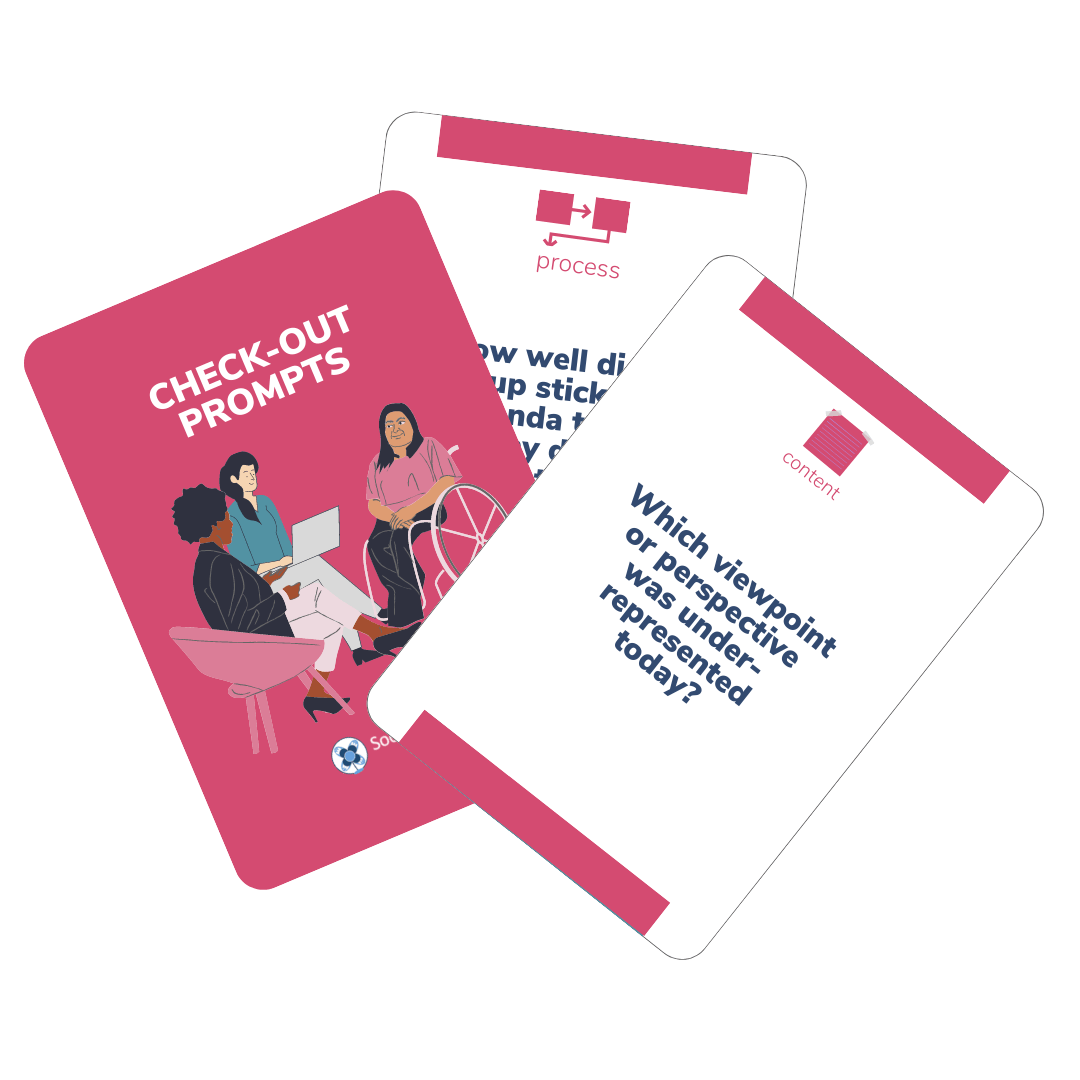
Meeting cards
These check-in and check-out prompts guide your attention towards better meetings
Our most-read articles on meeting facilitation
Comparison of decision-making methods
What are the downsides and advantages of different forms of decision-making?
How to have quick meetings that don’t waste time
Reports- exploration -decision – one of the most useful frame for sociocratic and non-sociocratic meetings!
3 tools from sociocracy to use right away, plus magic phrases
Learn how to make decisions effectively with Sociocracy in this easy-to-follow guide. Improve teamwork and collaboration with practical tools for smoother operations.
Keeping meetings short
Learn how to shorten your meetings with Sociocracy. By avoiding large groups, defining clear outcomes, and implementing facilitation hacks, you can make your meetings more efficient and productive.
Six Tips to Facilitate a Meeting Like a Pro
Do you remember being confused about the purpose of a meeting? Or perhaps the conversation kept wandering without any concrete decisions?





